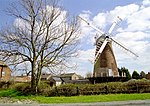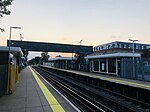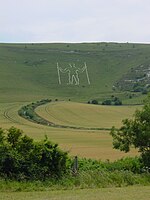Wootton Manor
Country houses in East SussexGrade II* listed buildings in East SussexGrade II* listed housesJacobean architecture in the United KingdomSouth East England building and structure stubs ... and 1 more
United Kingdom listed building stubs

Wootton Manor is a country house in Folkington, East Sussex. Originally a mediaeval manor house, from which parts of the chapel survive, it was rebuilt in the mid-17th century in a rather old-fashioned Jacobean style. Rupert Gwynne and his wife settled in the house after their marriage in 1905, and later commissioned the Arts and Crafts architect Detmar Blow to restore and extend the house, which he did in four directions, and add outbuildings, as well as working in the gardens. The cookery writer Elizabeth David, and her three sisters, grew up in this house. The central building has been listed as Grade II* by English Heritage.
Excerpt from the Wikipedia article Wootton Manor (License: CC BY-SA 3.0, Authors, Images).Wootton Manor
Lewes Road, Wealden Long Man
Geographical coordinates (GPS) Address Nearby Places Show on map
Geographical coordinates (GPS)
| Latitude | Longitude |
|---|---|
| N 50.825 ° | E 0.221 ° |
Address
Lewes Road
BN26 5HT Wealden, Long Man
England, United Kingdom
Open on Google Maps








